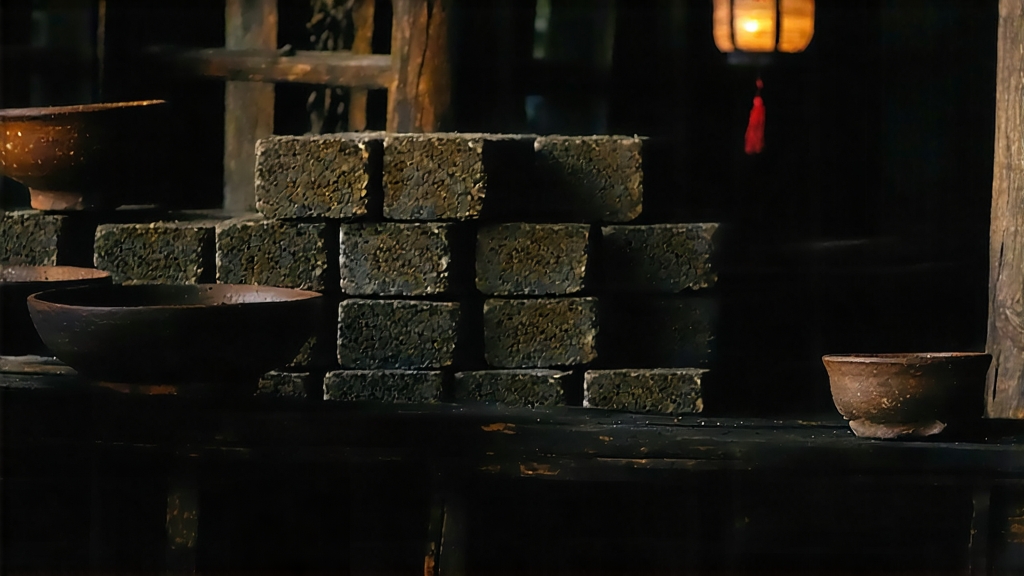
Tucked away in the southern folds of China’s Guangxi Zhuang Autonomous Region, Liu Bao tea has spent four centuries quietly fermenting while its more famous cousins—Pu-erh and Fu brick—stole the international spotlight. Yet for those who seek depth over dazzle, Liu Bao offers a liquid time-capsule: a tea that was once ballast in the holds of spice-laden junks, currency on the Silk Road’s southern spur, and the daily tonic that cooled the blood of dockworkers sweating beneath the sub-tropical sun. To drink a well-aged Liu Bao is to taste the humidity of the Li River, the camphor of ancient warehouses, and the faint echo of horse bells on the Tea-Horse Road.
Historical footprints
The name “Liu Bao” simply means “six forts,” a reference to the six stockades that once protected the small valley town of Wuzhou. During the Qing dynasty, the town served as the last navigable port on the Xi River system before cargo had to be portaged over the low Lingnan ranges. Tea pressed into 37-kilogram bamboo baskets left these forts by boat, traveled downriver to Guangzhou, and then onward to Hong Kong and Southeast Asia. By the late 19th century, Liu Bao had become the “coolie tea” of Malayan tin mines—cheap, filling, and believed to ward off malaria. Ship manifests from 1886 list Liu Bao alongside opium and gambier, proof that imperial taste-makers had already recognized its value as a digestive counterweight to rich, oily dockside food. When the British established iced-tea culture in the tropics, Liu Bao was the base they chose for its ability to remain smooth even after boiling, chilling, and dilution with condensed milk.
Micro-terroirs within one valley
Modern Liu Bao is still produced only within the 30-km radius around Wuzhou, but the valley’s fractured topography creates three distinct micro-terroirs. The eastern slopes, bathed in morning sun and cooled by river mist, yield leaf that is high in floral lactones; after aging it develops orchid and honey notes prized by Hong Kong collectors. The northern plateau, 400 m higher, gives slow-growing leaves thick in pectin; these become the “betel-nut” style—dense, resinous, and recalling the aroma of areca palm. Finally, the southern flood-plain produces bulk leaf whose broader cell walls absorb the humidity of the river, making it ideal for the wet-piling process that accelerates fermentation. Blenders marry teas from all three zones, much like a Champagne house balances crus, to achieve a consistent house character while still allowing vintage variation.
Crafting darkness: from sun-wither to basket press
Harvest begins in late April, when two leaves and a bud reach the “small fish-tail” stage—tips curved like carp tails. After a brief outdoor wither under 70 % shade cloth, the leaf is carried in bamboo trays to a pine-fired room where it is “killed-green” at 220 °C for exactly 90 seconds; the short, high-temperature roast preserves enzymes that will drive post-fermentation. While still warm, the leaf is rolled 18 minutes along a rattan screen, bruising the edges enough to release oxidases without shredding the blade. The crucial divergence from green-tea protocol comes next: instead of immediate drying, the leaf is heaped 35 cm deep in a cedar-lined chamber and misted with mineral-rich well water. Over the following ten hours the pile climbs to 55 °C, initiating non-enzymatic browning that turns catechins into theaflavins and thearubigins. This “wet-piling” phase—Guangxi’s answer to Pu-erh’s wo-dui—lasts 25–30 days, with five turnings and moisture adjustments guided by nothing more than the master’s bare forearm: when the pile feels like a damp puppy’s fur, it is time to aerate. Finally the dark, almost black leaf is steamed, packed into double-lined bamboo baskets, and pressed under a 50-kilogram stone disc for three days. The basket’s breathing weave allows residual moisture to migrate outward, creating the rounded “basket aroma” that connoisseurs compare to freshly split sugarcane.
Time as co-fermenter: the caravan note
Unlike Pu-erh, which is often stored in pumidors, Liu Bao continues to mature in the same bamboo baskets it